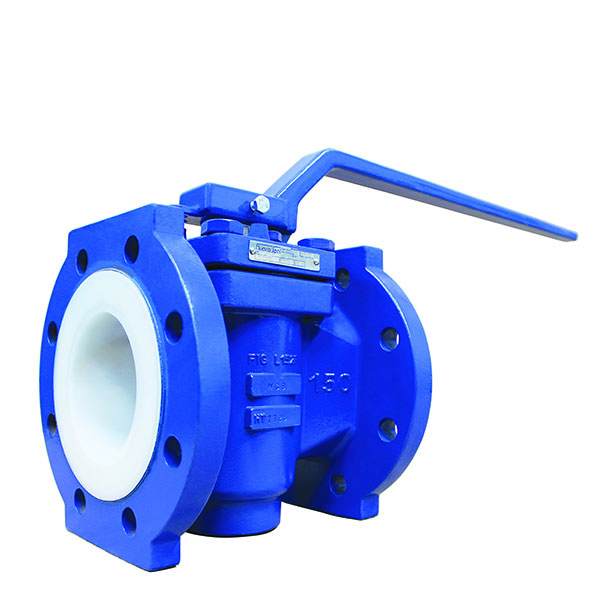LINED PLUG VALVES – MECHANISM, USES, AND APPLICATIONS
At the heart of every sector relying on hydraulic systems for operations are plug valves. These machines help in the efficient and smooth running of the hydraulic systems. They often have conical or cylindrical shapes with a quarter-turn manual valve used for starting and stopping the fluid flow.
The plug valve offers on-off diversion and moderate throttling services. Plug valves are categorized into two types: lubricated and non-lubricated plugs.
Lined plug valves fall in the category of non-lubricated plug valves, with unique mechanical design characteristics that reduce friction between the body and plug during operation.
What are Lined Plug Valves?
Apart from being non-lubricated, the lined plug valve has its body and plug lined with Teflon. This feature enables the valve to resist corrosion from chemical fluid.
However, when choosing a lined plug valve, you should consider specific conditions for better performance. Some manufacturers discourage using their valves for vacuum services, underscoring the need to examine specifications.
If you are looking for lined plug valves for vacuum services, you should consider ones with melt-processable thermoplastics to lock the liner perfectly. On the other hand, other manufacturers use different PFA and TFE as lining materials to surfaces between the liner and the plug, thus minimizing the valve from operating torque.
The Mechanism of Line Plug Valves
Plug valves are quarter-turn type valves, requiring 90 degrees of rotation to move from fully closed to open position. Since they are quarter-turn valves, they are fast-acting.
They are used for close and open applications; however, they are unsuitable for throttling since the fluid velocity could erode the plug and body when the valve is half-open.
An eroded plug could lead to leakage and incorrect closure. The plug valve has a low pressure drop since the fluid passage is 100%.
Plug valves are used in many industrial and commercial applications, such as directional flow control, liquid fuels, or gas handling. Since they are leak-tight service, smooth design, multiport design, and offer minimal resistance, they are preferred with many systems and sectors.
Some valves have a three-way valve that requires you to divert flow. The inflow enters through the inlet to the plug before channeling it to one of the remaining two outlets.
When you turn the handle midway, the flow will be equally distributed to the two outlets. You can also use a combining inflow from two inlets to project the outflow to a single outlet.
Components of Lined Plug Valves
Line plug valves have different parts, such as body,plug, cover/bonnet, and top seal-kit design.
- The body – It connects the pipes via an end connection, housing all the internal components.
- The Plug – The plug, also called the tapered plug, acts like the ball of a ball valve. This helps to regulate the flow of the fluid.
- The cover/bonnet – It is the component that covers the top of the valves & makes sure that there’s no leakage through the stem.
- Top Seal-kit – It is the component that is between the plug stem & the cover making sure there’s no pathway for the fluid to pass through. It consists of multiple metallic & PTFE sealing components.
- High-Quality PFA – helping to protect the body & plug while resisting against wide chemical products variations.
- Lever/Gear/Actuator – ISO 5211 Monitoring Pad for easy actuation mounting. For smaller sizes, levers or handles are used for operation purposes. Whereas, for bigger sizes gear operators are used.
Industrial Applications of Plug Valves
Plug valves are highly valued in operation, requiring tight shut-off and on valves. The plug valves are suited for operations dealing in hazardous or corrosive liquid and gas.
Manufacturers design them for chemical industries, fuel gas piping systems, non abrasive slurries, and vacuum services. Since these valves don’t get clogged, they can handle high-pressure operations and other dangerous materials.
- High-Pressure Flow Lines – Plug valves are comfortable with high-pressure operations, such as cementing, coiled tubing, high-temperature materials, and acidizing.
- Upstream Applications – Most operations requiring upstream application prefer lubricated plug valves because they will not get clogged and are comfortable with corrosive materials. However, you will need to conduct proper regular maintenance in short intervals.
- Flow Control/Isolation – Plug valves are good with applications that require flow control of materials since they are easily sealable. This will help separate the liquids in the pipes to prevent any contamination mix, which is an important feature in high-pressure operations.
If you are running a system dealing with corrosive chemicals or high-pressured operations, lined plug valves are worth considering. Your plant will benefit from a plug valve as it prevents leakages and liquid contamination.
Are you interested in learning more about how Richter lined plug valves can benefit your business? Contact us today to discuss your requirements.
